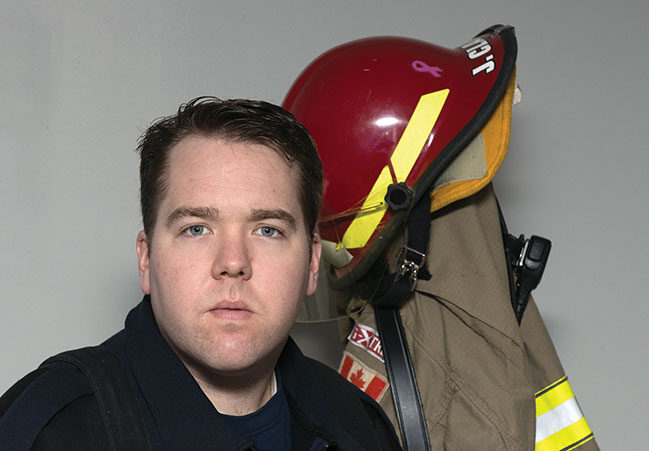
Front Seat: Retraining for your role
By Jason Clark
Features Training Week firefighter firefighter training leadership training
Training is a constant topic within the fire service these days. There are no two exact same scenes that we are called to, and I am a big believer that there are many different paths to successfully bring a scene to stabilization.
I am constantly hearing within my department that the crews want to be challenged and that they don’t want training to be easy. I agree that training shouldn’t always be easy, and it needs to be done in a controlled environment with new recruits.
When you are training firefighters with varying backgrounds and years of service, it can be a challenge on some levels. You’re going to have a few members who have a strong working knowledge on a subject; they may even be from a background that relates to the subject that you’re training on.
Having the mindset that there is only “one” way to accomplish a goal is something that I try to steer away from. One of the best training sessions that was put on by one of our deputy chiefs when I first became a captain, was an auto extrication scenario where he put a note on the hydraulic pump that read “Out of Service – Sorry”. We now had to use hand tools or whatever else was available to us on the trucks.
This caused me some discomfort, and it was a drill designed to do that to the captains. It taught me that my first plan of simply popping the door quickly changed to use the resources and tools we had available both on scene and via a radio call.
The deputy chief came up and asked me and asked, “What are you going to do next?” My mind was racing. I started by getting the crew to do a 360 and I was lucky enough to have a couple of licensed heavy truck and passenger car technicians, and they went right to work. But I forgot something that I was reminded of very quickly – we have another rescue truck with a set of hydraulic tools in our neighboring district about eight to 10 minutes away.
When getting on the scene, I knew that I had the tools and resources that I needed for the assignment, my crew was with me and they had the tools they needed, and we communicated with each other.
The crews worked very quickly with what they had and removed the door with a combination of air powered and electric hand tools. But the main learning objective that I walked away with was making sure I remembered to call for assistance early on and not to wait. This was a simple one door drill, but if the scene was more complex with many different access challenges to the passenger compartments, or even multiple vehicles, making the call or requesting a second rescue crew would have been crucial early on in that scene. This was a crucial lesson learned early on in my role as a captain.
Some of the best advice I took as a new captain was that we don’t know it all and that “panic spreads panic”. Sure, we tend to get a little louder vocally on the fire scene and our brain function can tend to get in a more rapid state, and sometimes not for the better. It doesn’t help our crew members, the people that called us for help, or ourselves if we can’t control our emotions and eliminate that panic reaction from our mental programming.
The way that I was able to get better at mitigating the adrenaline on the fire ground and to keep focused was making sure I had my thought process in order. I’m not perfect, but it started with making sure I was working safely and getting as much of the picture of the scene as possible. When getting on the scene, I knew that I had the tools and resources that I needed for the assignment, my crew was with me and they had the tools they needed, and we communicated with each other.
Being a captain in today’s fire service requires many different traits, and for those that are striving for that position, I would offer that a lot comes from your ability to manage and retrain your emotions and thought processes when you are on a fire scene. This will be difficult at first and you may have to really dive deep into how you are going to manage that process. I found by talking with my crew on the way to the call and having some sort of basic plan was a good start. Yes, the plan may change, but you can deal with that through strong communication. It is going to be tough and a challenge – but that seems about right for this line of work. Your department saw that you would be a good fit for a captain. Prove them right.
Jason Clark has been a volunteer firefighter in southwestern Ontario since 2007. Having made the transition from firefighter to captain, Jason shares perspective on roles in the fire service and riding in the front seat. Contact Jason at jaceclark71@gmail.com or @jacejclark.
Print this page
Advertisement
- ‘Kind and thoughtful’ firefighter, 19, who died in B.C. is identified by her brother
- Igniting innovation: Discovering cutting-edge methods to train firefighters